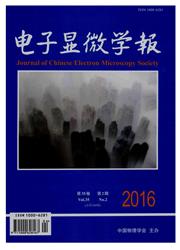

 中文摘要:
中文摘要:
基质微尺度形貌与力学环境是影响肿瘤发生、发展及其治疗敏感性的关键因素。本研究利用光刻法加工硅模板,联合复制塑模法,制备了5μm和10μm两种不同长度的PDMS微柱阵列基底,采用环境扫描电镜的低真空模式观察了培养在相应基底上MCF-7肿瘤细胞的形貌差异。同时,利用流式细胞仪研究了弹性基底影响紫杉醇对肿瘤细胞生长的抑制作用。结果显示,相对长的微柱陈列,切向弹性系数低,可阻碍MCF-7细胞的铺展,并增加肿瘤细胞对化疗药物紫杉醇治疗的敏感度。本研究突出了基底切向结构、力学微环境,以及所引发的生物力药理学行为,为优化肿瘤研究提供了新的视角。
 英文摘要:
英文摘要:
The topographic and mechanical microenvironment plays a critical role in the occurrence and development of tumor,which is also a significant cue for the sensitivity of drug treatment to the tumor. The polydimethylsiloxane( PDMS) micropillar array substrates with pillar height of 5 μm and 10 μm were fabricated using silicon etching and replica molding. Imaging of low-vacuum mode of environmental scanning electron microscopy( ESEM) showed the discrepant topography of MCF-7 cells on different PDMS array substrates. We studied the influences of the micro topographic substrates on the responses of MCF-7 cells to taxol which was a typical anti-tumor drug. Results showed that the PDMS array with longer pillars had lower tangential spring constant which inhibit the spreading of MCF-7 cells and increased the sensitivity of MCF-7 to taxol. Our study highlights the biomechanopharmacological effects of tangential structure and mechanical microenvironment on tumor cells, which provide a new perspective for optimization of pharmacological studies on tumor.
 同期刊论文项目
同期刊论文项目
 同项目期刊论文
同项目期刊论文
 期刊信息
期刊信息
